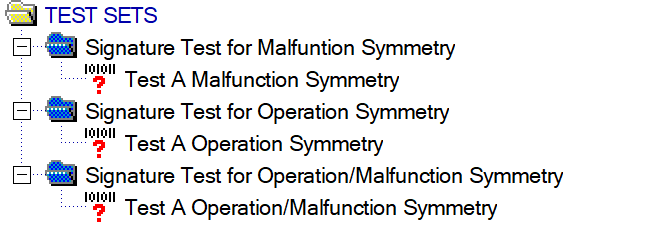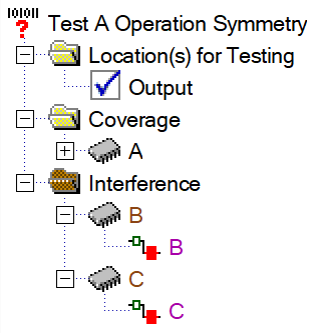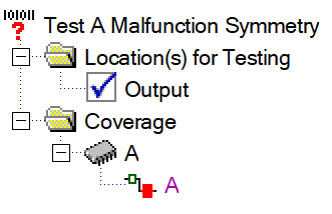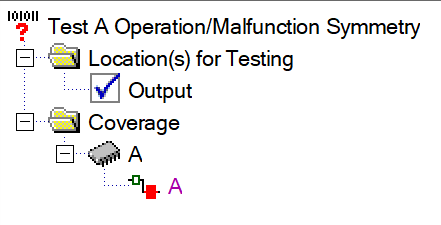|
Illustration: Using Signature tests in Diagnostics
 Coverage on B and C not included in any of these tests.
Test Observation at Output Flag
|
 |
Test contents and corresponding screen image
 |
 |
 |
 |
 |
 |
|
Can only prove A good
|
Can only prove A bad
|
Can prove A both good or Bad
|
Case 1
|
Detection: Test A Operation Symmetry
Isolation: Test A Operation Symmetry
Observation was at Output Flag
When Test passed A was Proven good (No Faults Detected - B and C Detected - observation path good)
When test Failed A was not proven good and still in ambiguity with B and C (observation path could be bad)
|
 |
Case 2
|
Detection: Test A Malfunction Symmetry
Isolation: Test A Malfunction Symmetry
When Test passed A was proven Bad (B and C not in Ambiguity with A - observation path unknown)
When test Failed A was not proven (No Faults Detected)
|
 |
Case 3
|
Detection: Test A Operation/Malfunction Symmetry
Isolation: Test A Operation/ Malfunction Symmetry
When Test passed A was proven Bad (B and C not in Ambiguity with A - observation path unknown)
When test Failed A was not proven (No Faults Detected)
|
 |
Case 4
|
Detection: Test A Operation Symmetry
Isolation: Test A Malfunction Symmetry
Here Isolation Test for Malfunction isolated out A (proven bad) when it passed but when it failed A was not proven good and still in Ambiguity with B and C
|
 |
Case 5
|
Detection: Test A Operation Symmetry
Isolation: Test A Operation/ Malfunction Symmetry
Here Isolation Test for Operation/Malfunction isolated out A when it passed but when it failed A was no longer in Ambiguity (proven bad)
|
 |
In Case 1 The observation path is known to be good when the test passes and therefore both B and C are shown as detected and proven good. When the test fails B and C could be the cause (Interference) and are therefore detected as Interference and in Ambiguity with A. (Interference items will be detected unless interference is turned off)
Notice that in Case 2 and Case 3 above the result appear the same. This is because the observation path is unknown and could be causing the test to fail and therefore they show up as not detected (not in the coverage). Case 4 and 5 show the difference between these two types of Signature tests.
Case 4 and 5 show the difference between "Test for malfunction" and "Test for Operation/Malfunction" as an isolation test. In case 4 the "Test for malfunction" used for Isolation if it passes (Did not show a malfunction) could have passed because the observation path was bad and therefore A is still in ambiguity with B and C. In Case 5 "Test for Operation/Malfunction" splits the ambiguity into two parts because the only way for the test to pass was if A was Good leaving B and C in ambiguity (Observation path good.)
Summary: Signature Tests are very easy to make but can be difficult to totally understand due to their test interference and detection. The Analyst should note the "test interference" and "Detection" when using these tests or use path based tests as an alternative.
